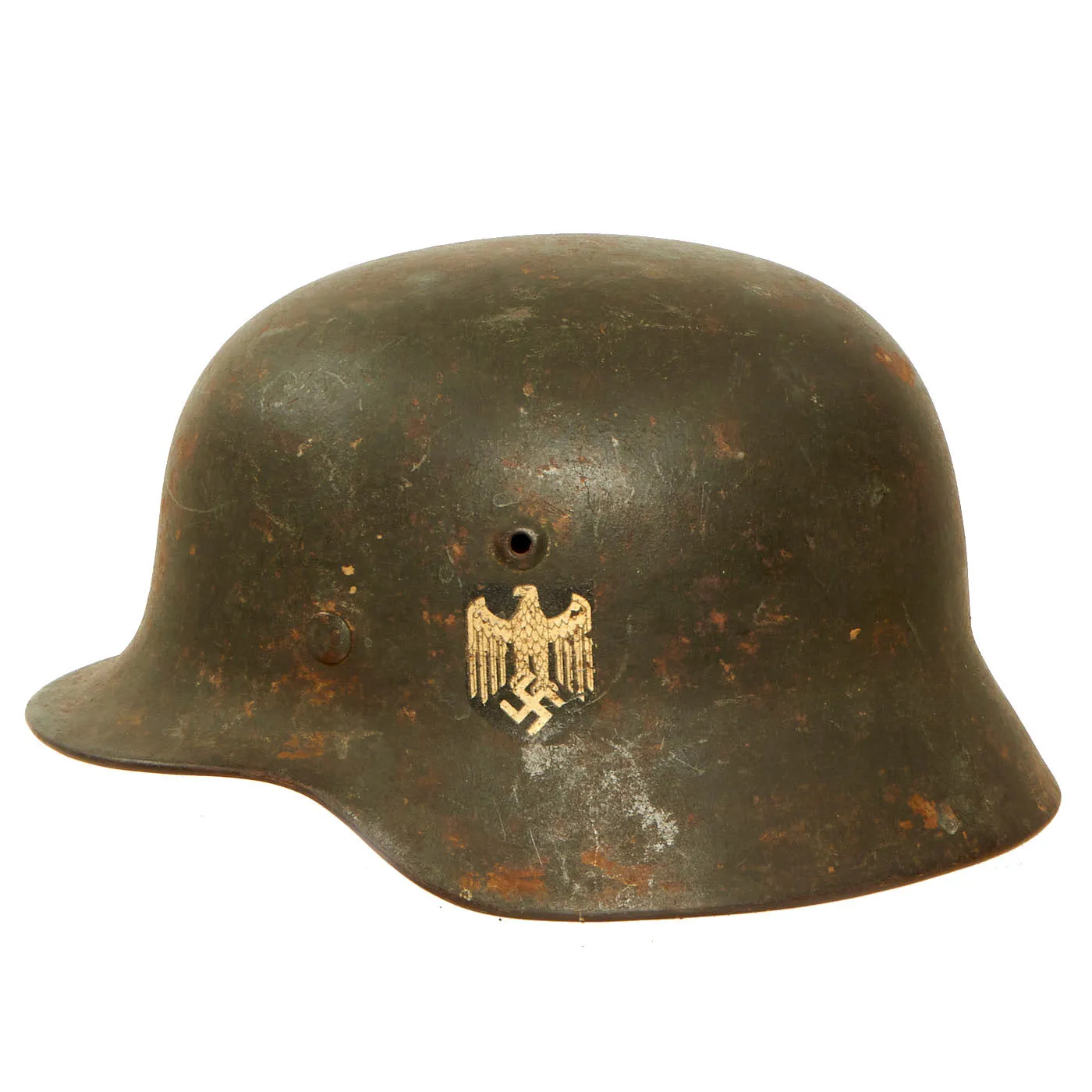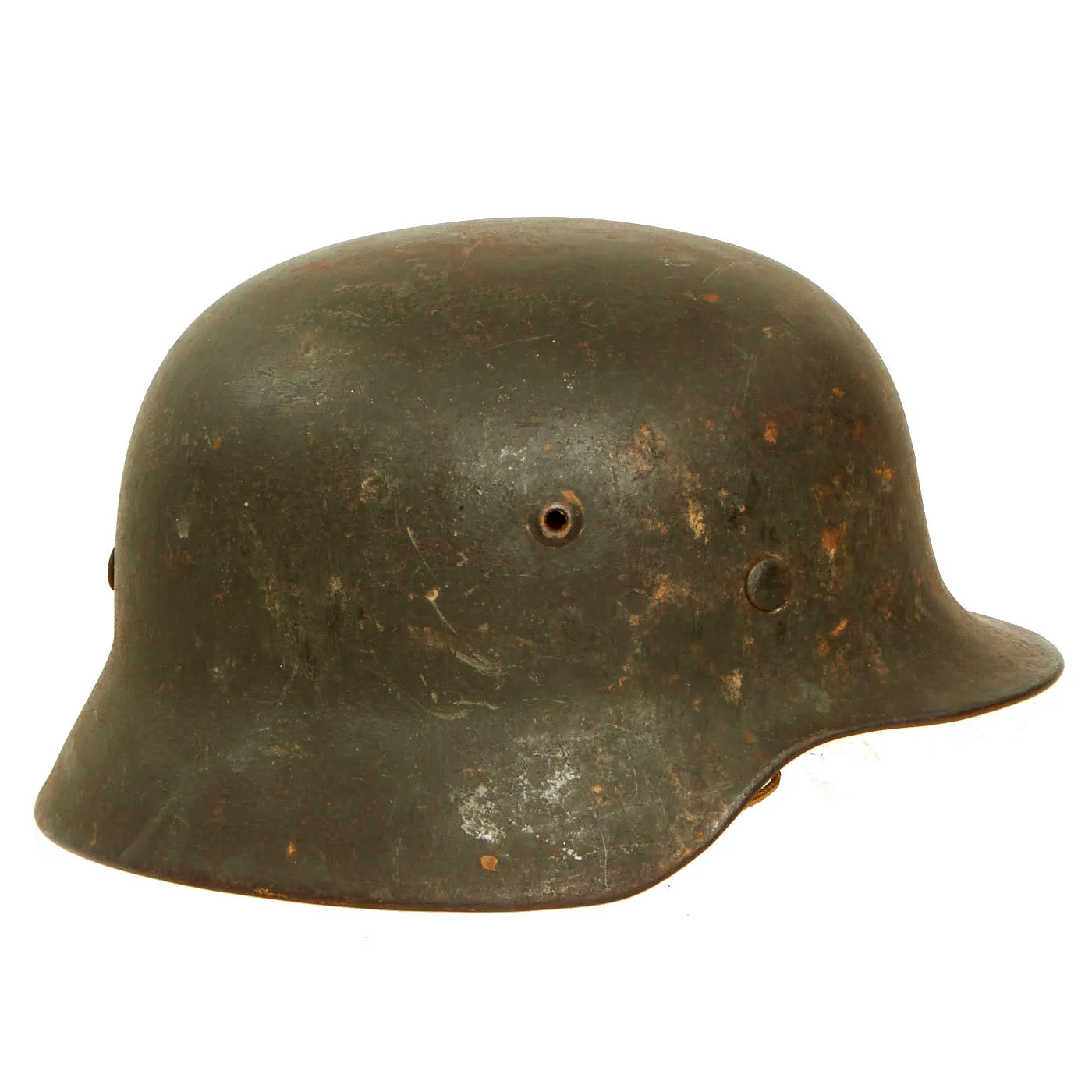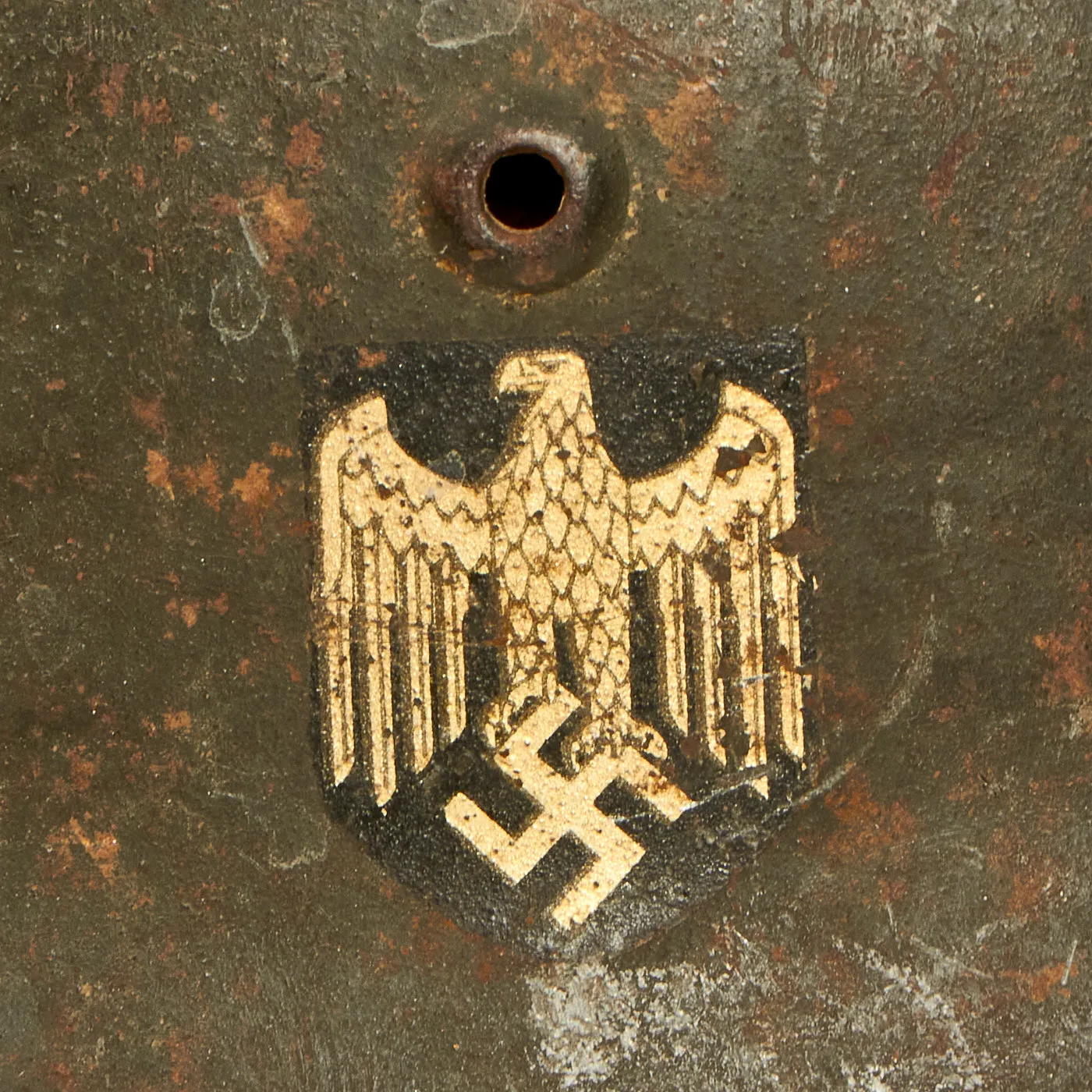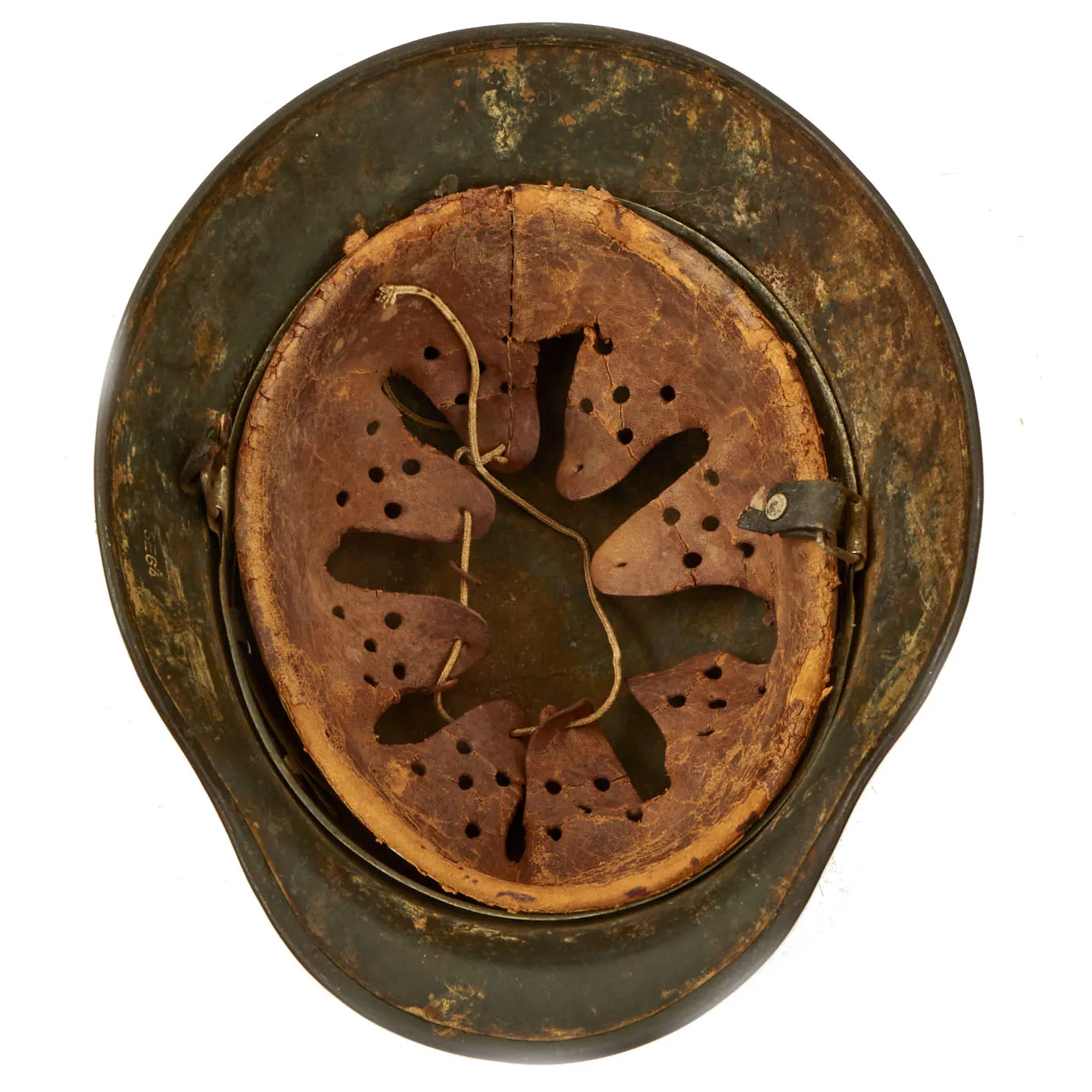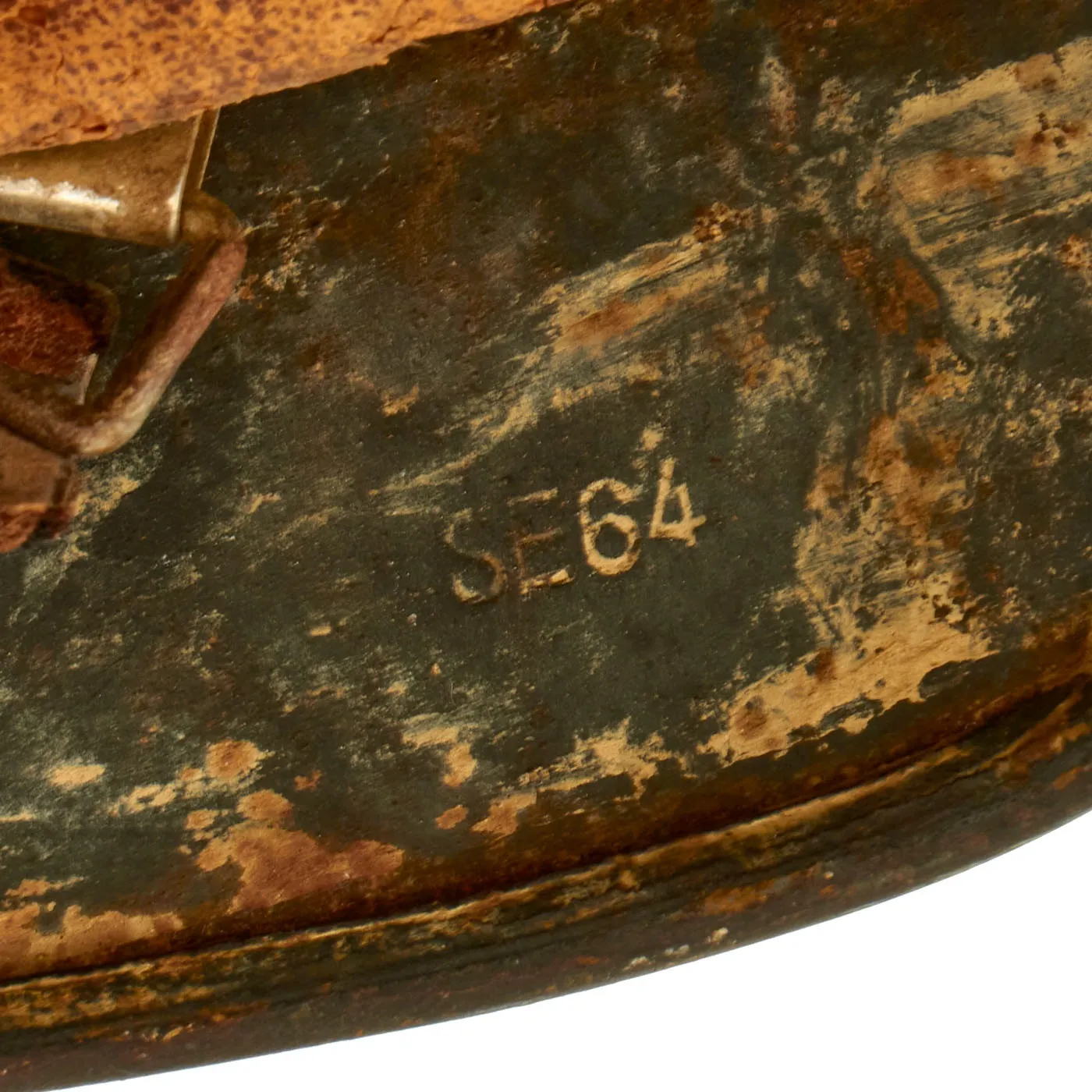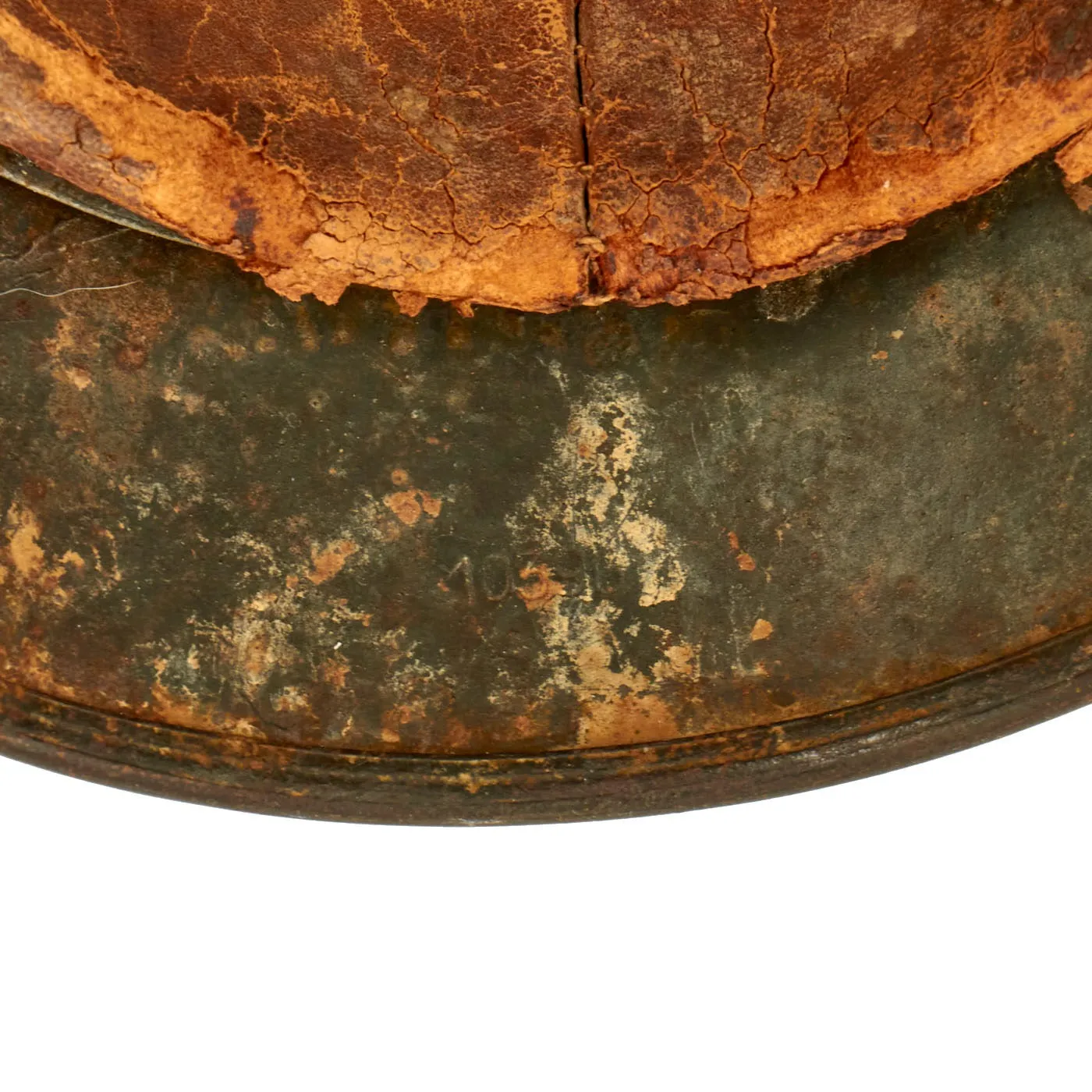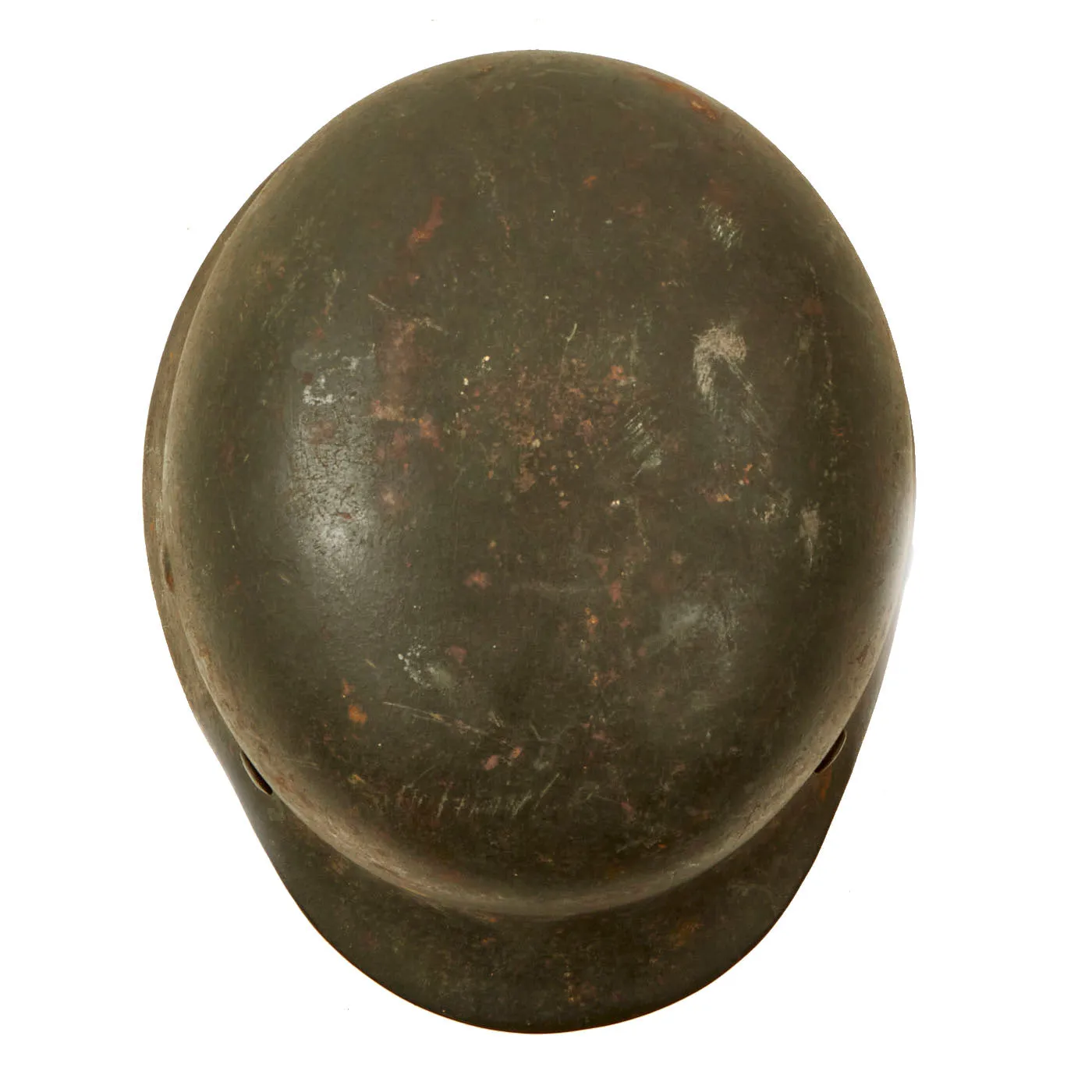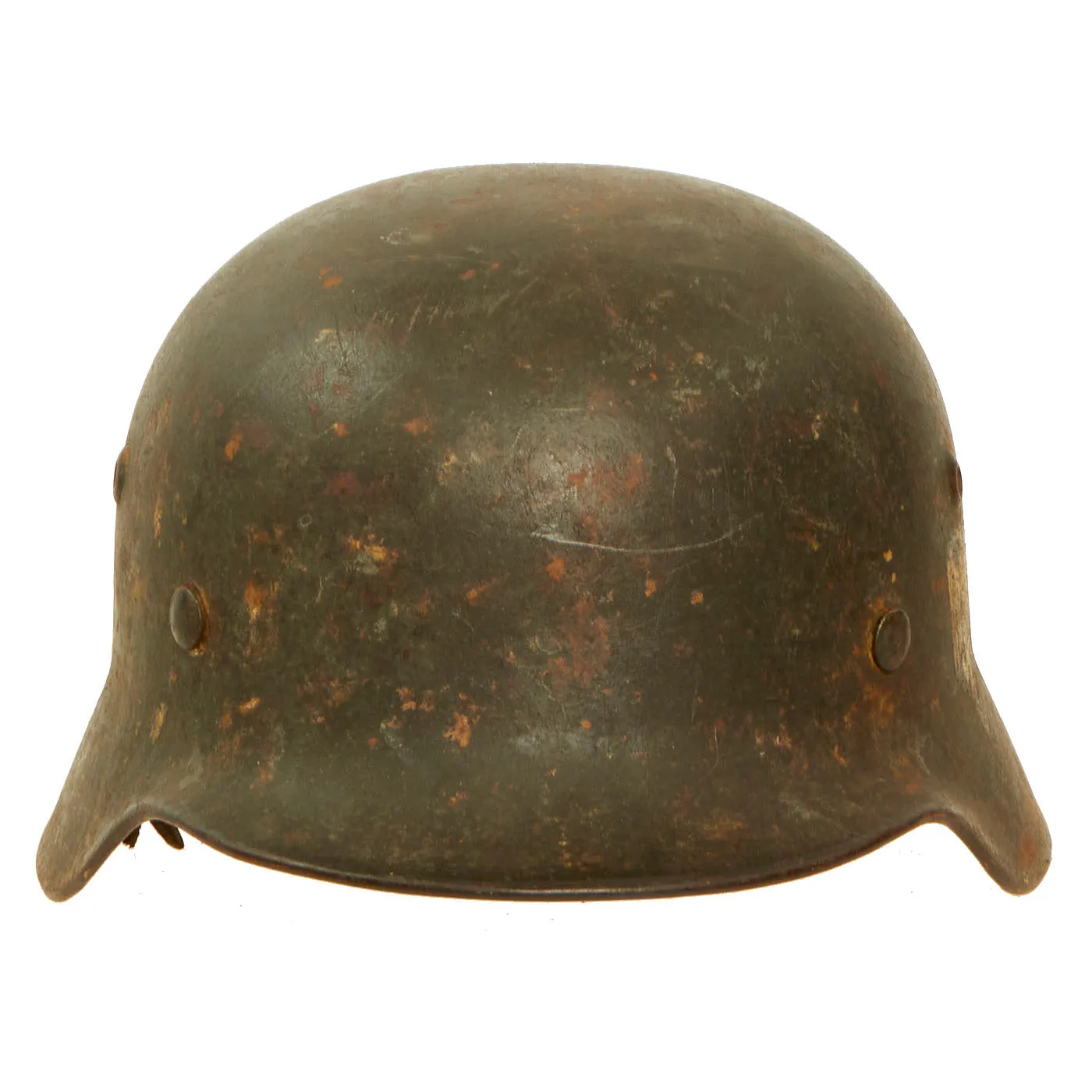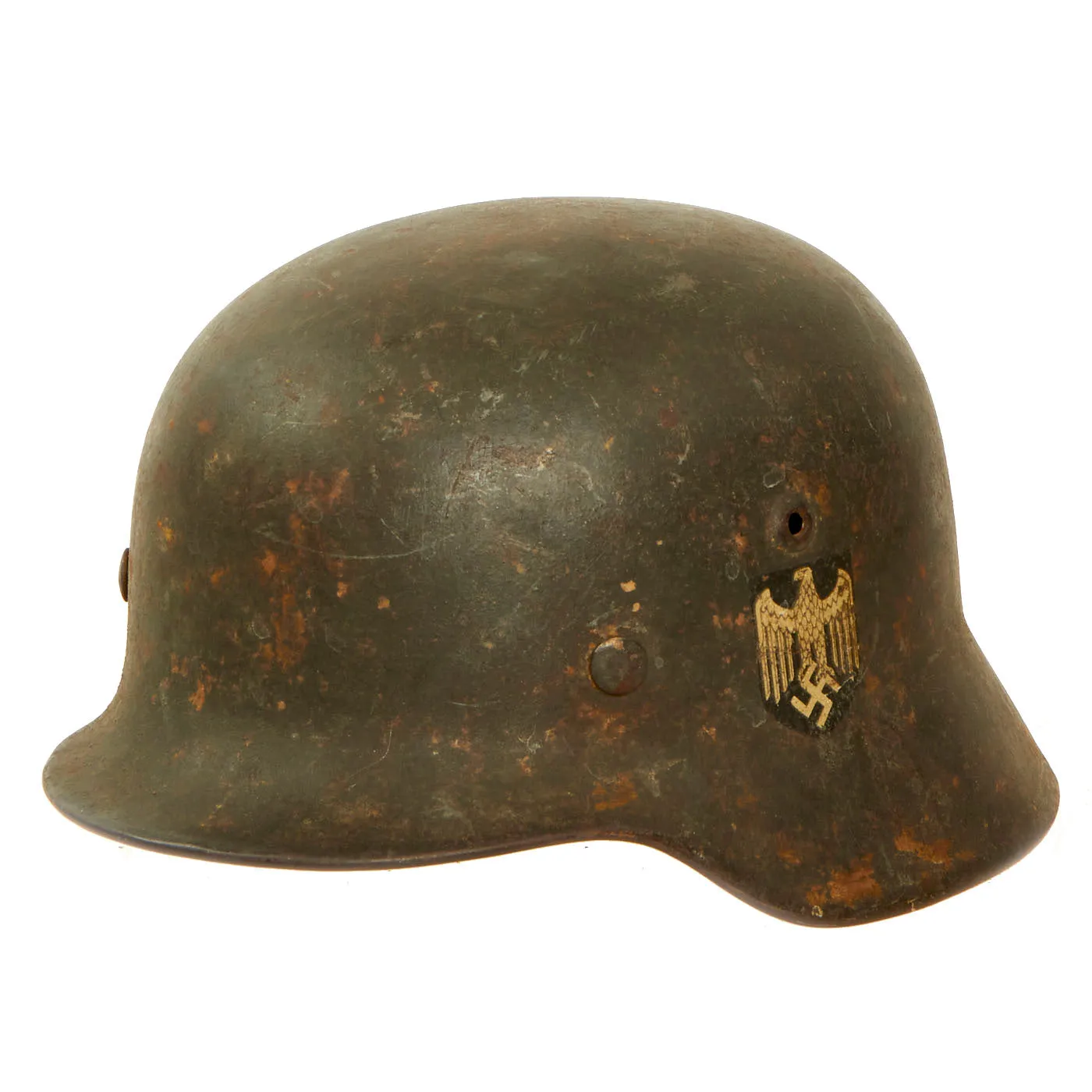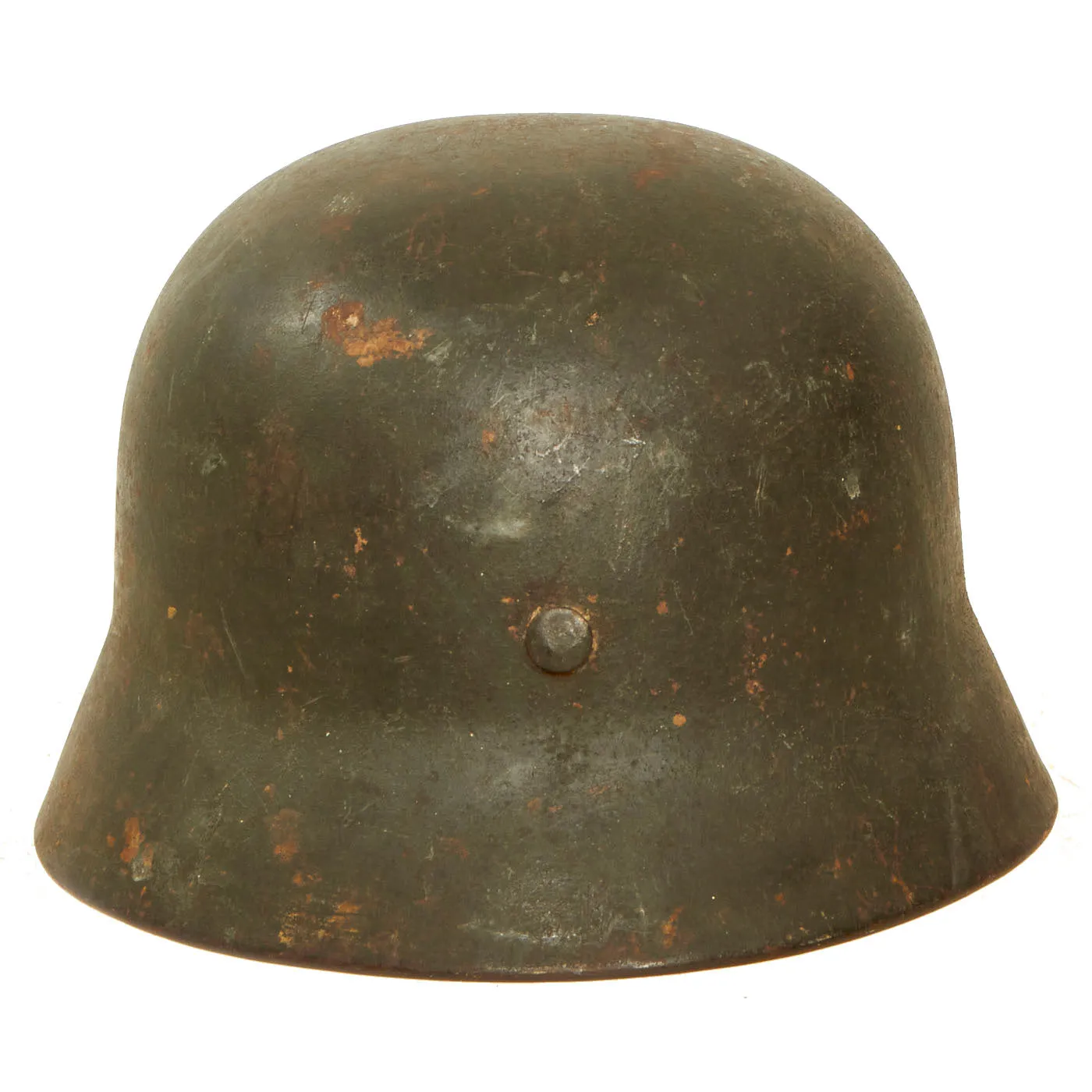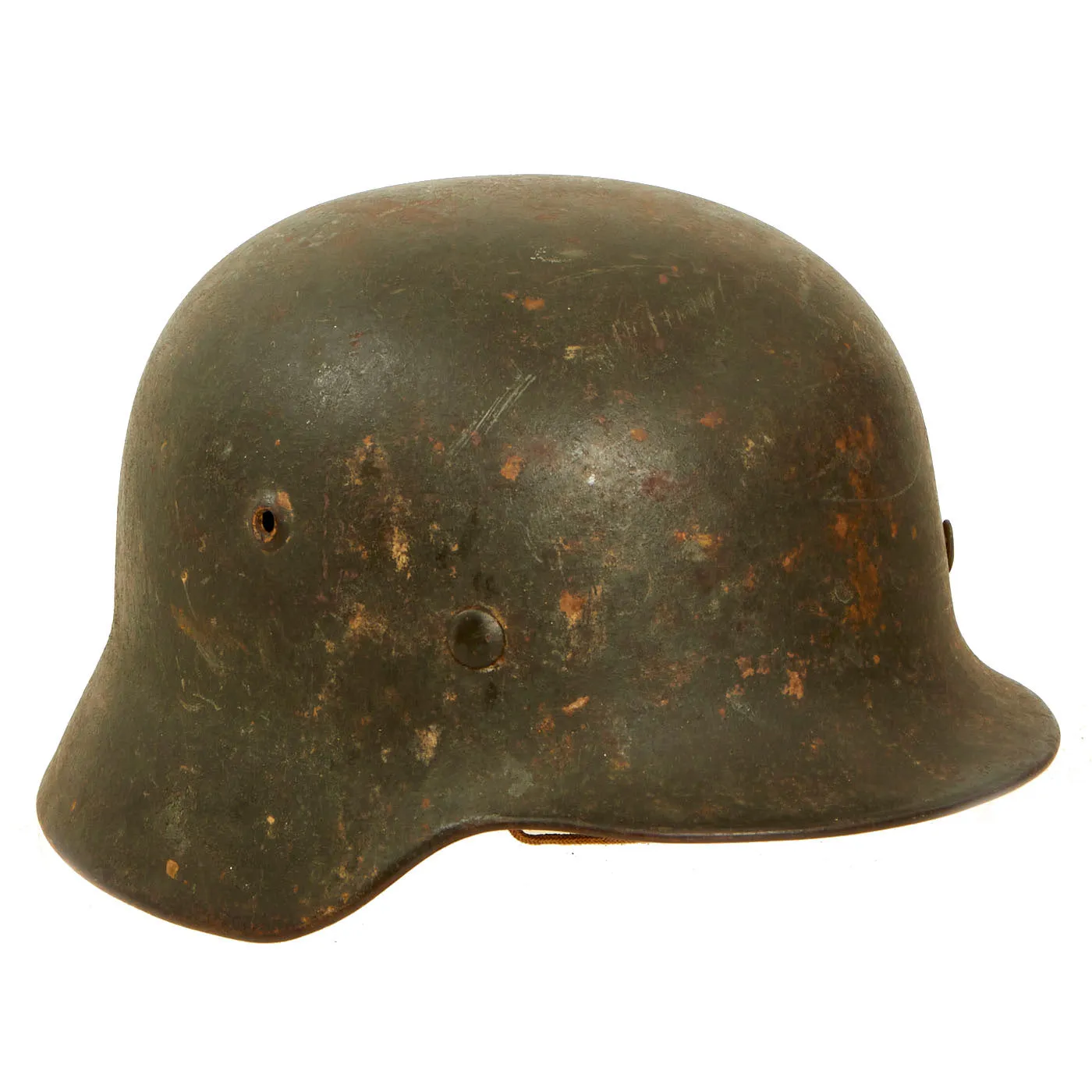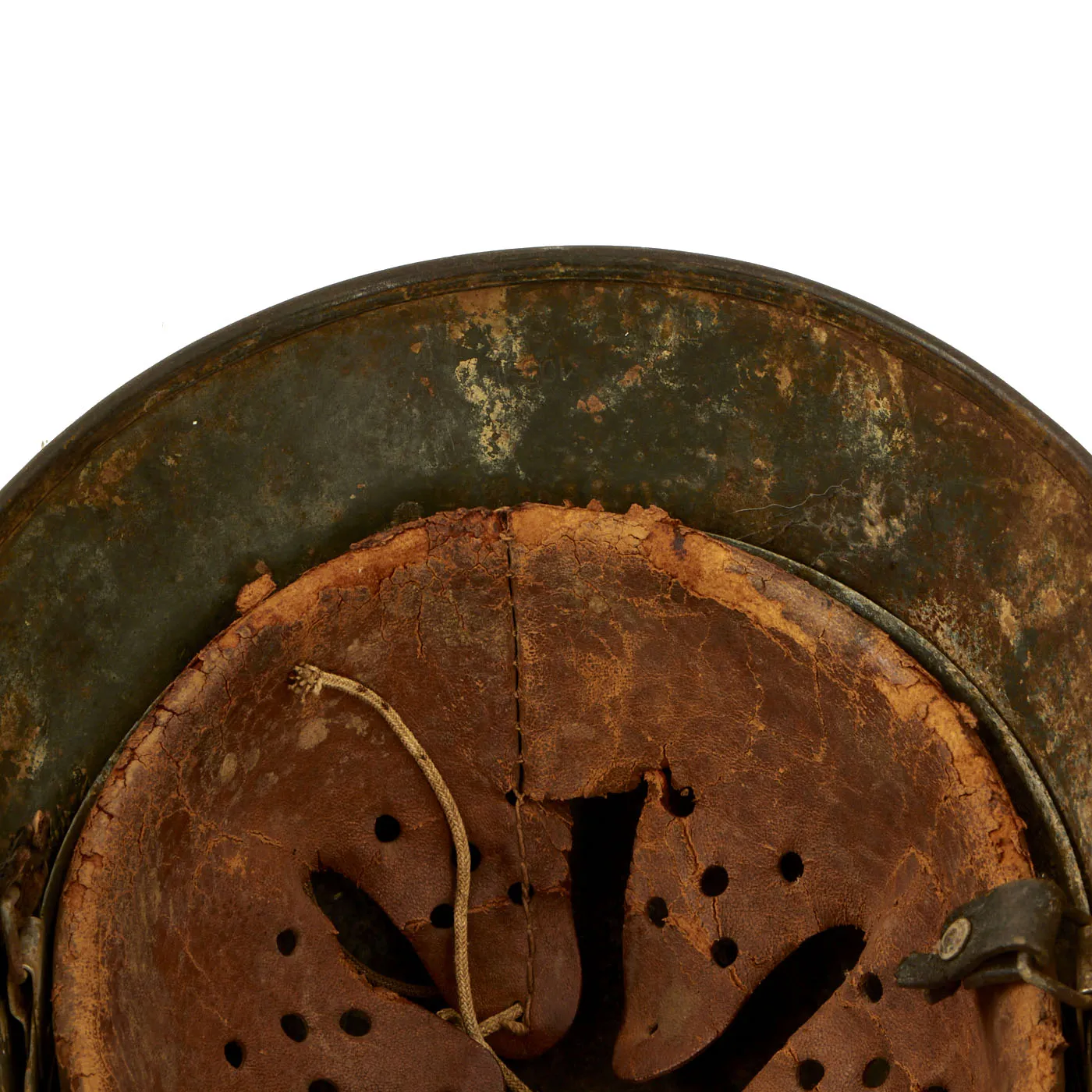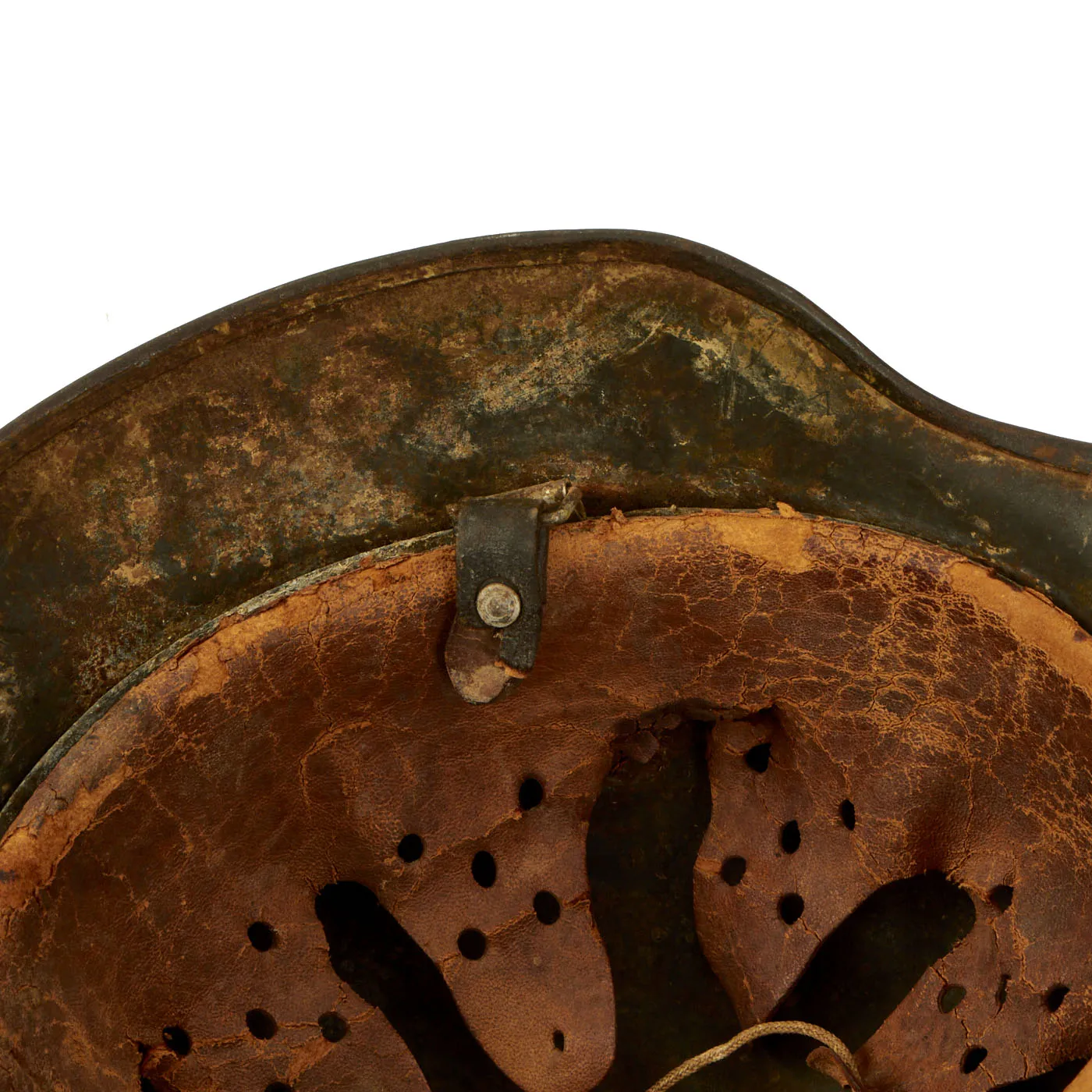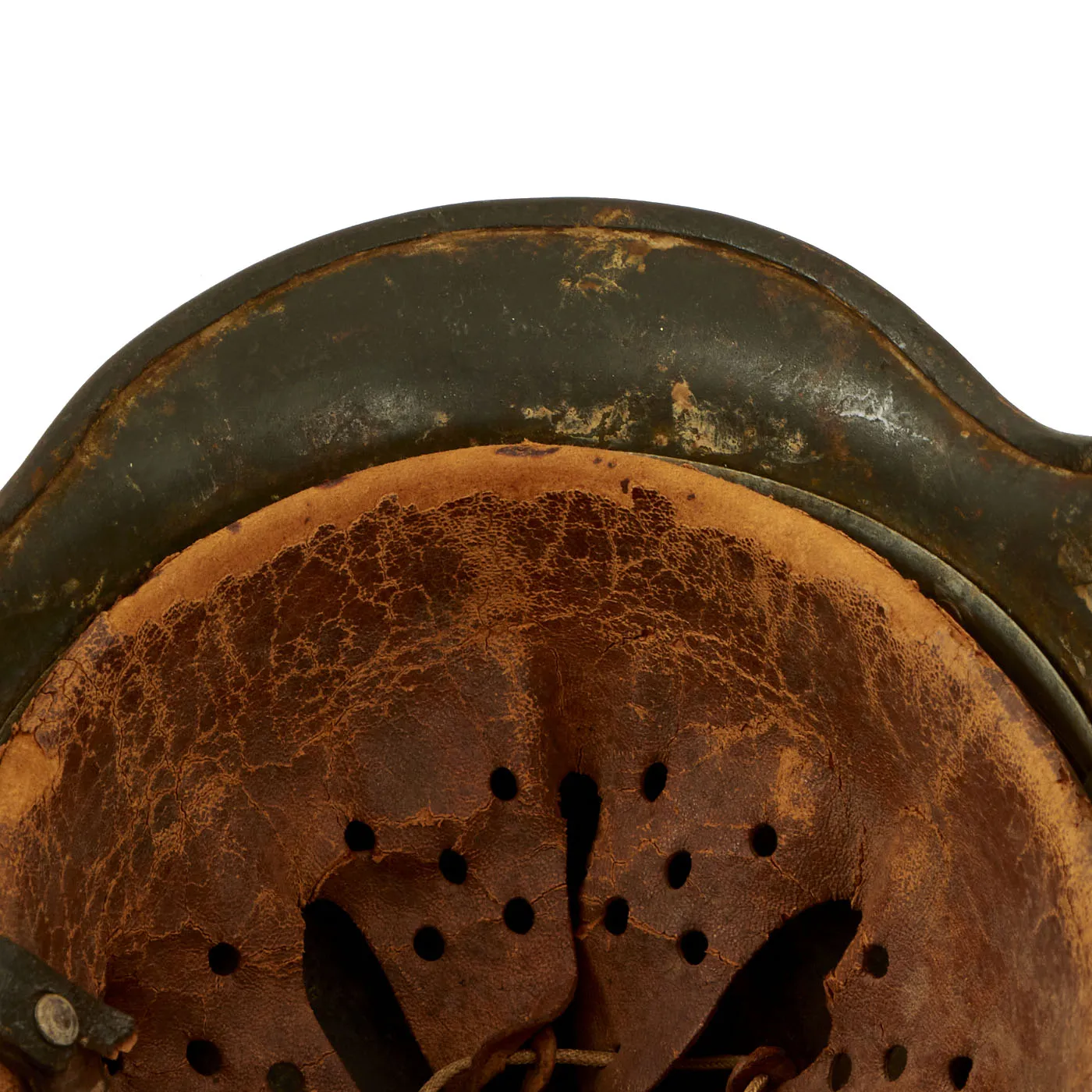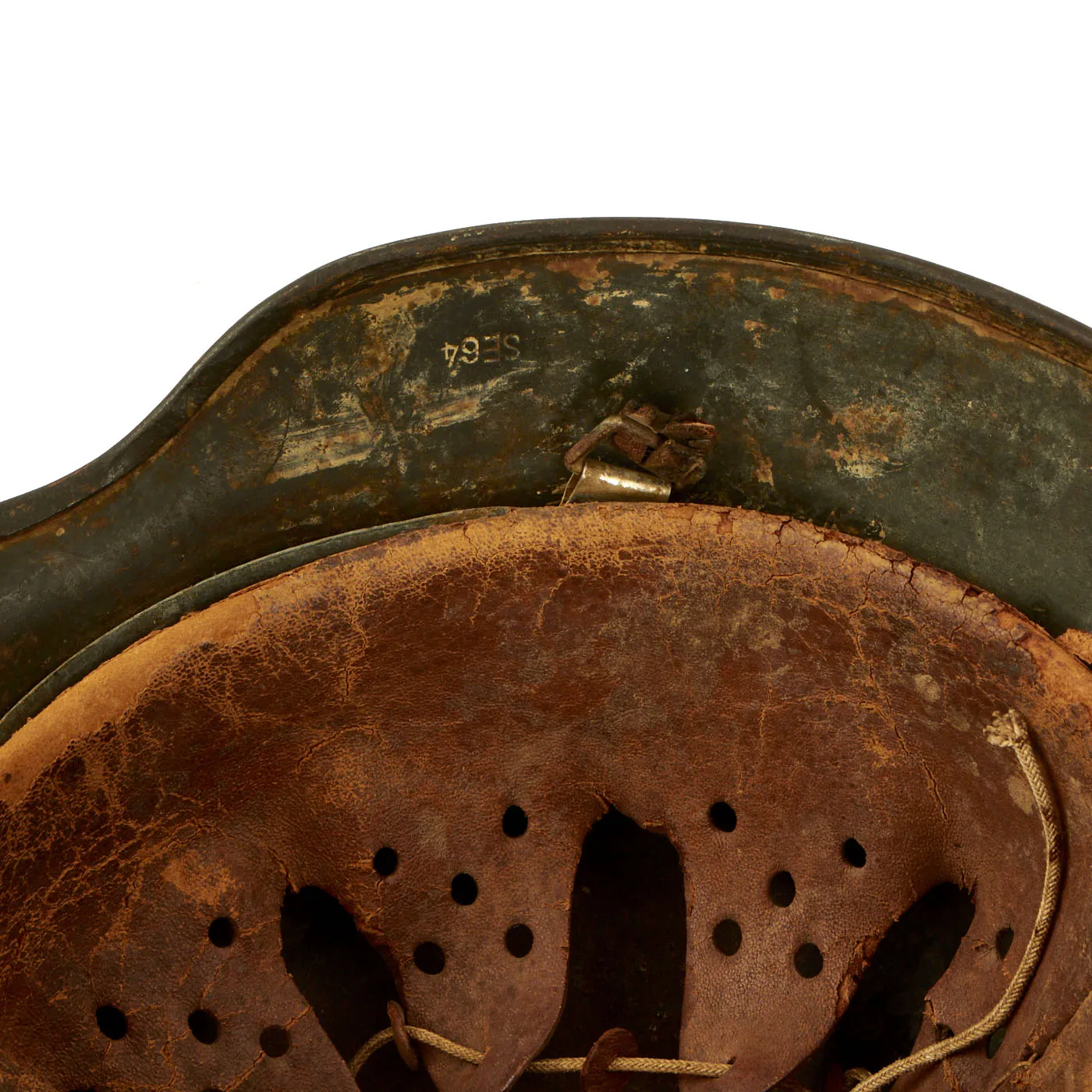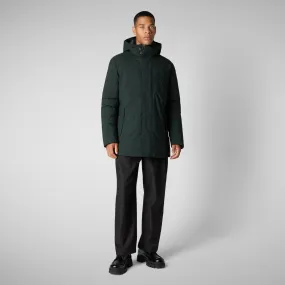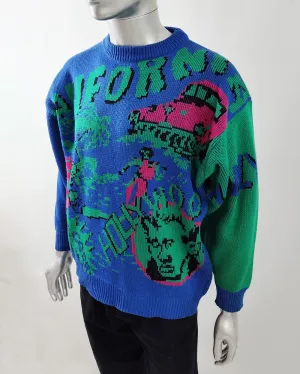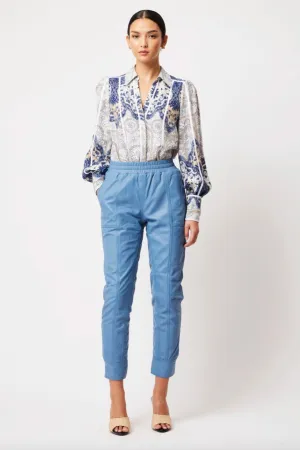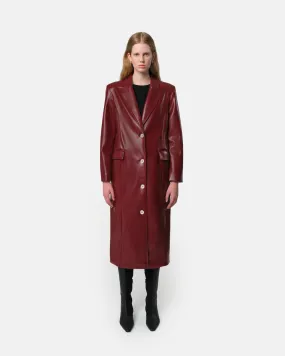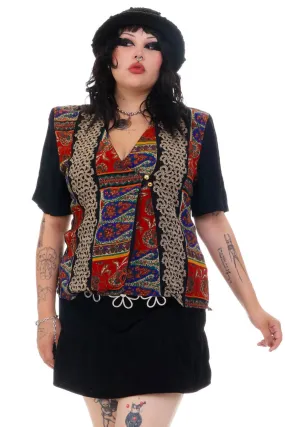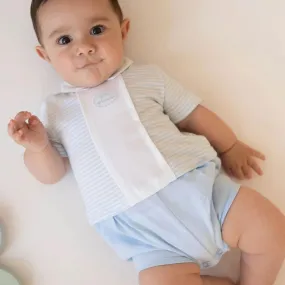Original Item: Only One Available. This is a great service worn all original example of a German Model 40 Steel helmet, as issued to the Wehrmacht Heer (army). This stamped sheet steel construction helmet retains about 80% of its original lightly textured panzergrau paint, with the usual scratches and chips from service, however it still looks great. Even better, it's got what looks to be original field dried mud and dirt on both the interior and exterior. Most likely the helmet was lost in the field, and picked up by a USGI, who kindly left the original dirt on it. The left side of the helmet features a wonderful Heer eagle decal, which is retained over 90%, with a great lightly yellowed color to the silver eagle. There is just a bit of chipping to the decal, and it still reflects the light well.
The reverse, interior, neck guard apron is serial number stamped 10396 and the interior, left side, apron has the stamped manufacturer's code and size, SE64 indicating that it was manufactured by Sächsische Emaillier und Stanzwerke A.G. of Lauter, Germany. Size 64 is a nice medium size that can accommodate liners from 56cm to 57cm or US 7 to 7 1/8. Size 64 shells are harder to find and are therefore more valuable to a collector.
All three liner split pins are still intact, and retain almost all of their paint, which matches the color and texture of the shell perfectly. The helmet still has its correct M31 liner with all of the 8 fingers present, however the leather shows quite a bit of wear and deterioration. The original top tie string is present, but not threaded through all of the fingers anymore. The liner band is the correct mid-war galvanized steel, however due to the original dirt and mud on the interior, we cannot read the markings on the side of the liner band. As this is a size 64 helmet shell, it should be a 56 or 57cm liner. There are still remnants of the original chin strap attached to the rectangular loops, which looks to have deteriorated due to water exposure.
Overall a great 100% genuine M40 Single Decal Heer Army helmet, with fantastic period wear and dried on mud! M40 helmets of this quality are always hard to find on the market. This is an item that will only continue to appreciate in value over time.
The first "modern" steel helmets were introduced by the French army in early 1915 and were shortly followed by the British army later that year. With plans on the drawing board, experimental helmets in the field, ("Gaede" helmet), and some captured French and British helmets the German army began tests for their own steel helmet at the Kummersdorf Proving Grounds in November, and in the field in December 1915. An acceptable pattern was developed and approved and production began at Eisen-und Hüttenwerke, AG Thale/Harz, (Iron and Foundry Works), in the spring of 1916.
These first modern M16 helmets evolved into the M18 helmets by the end of WWI. The M16 and M18 helmets remained in usage through-out the Weimar Reichswehr, (National Defence Force, Circa 1919-1933), era and on into the early years of the Third Reich until the development of the smaller, lighter M35 style helmet in June 1935.
In 1934 tests began on an improved Stahlhelm, whose design was a development of World War I models. The Eisenhüttenwerke company of Thale carried out prototype design and testing, with Dr. Friedrich Schwerd once again taking a hand.
The new helmet was pressed from sheets of molybdenum steel in several stages. The size of the flared visor and skirt was reduced, and the large projecting lugs for the obsolete armor shield were eliminated. The ventilator holes were retained, but were set in smaller hollow rivets mounted to the helmet's shell. The edges of the shell were rolled over, creating a smooth edge along the helmet. Finally, a completely new leather suspension, or liner, was incorporated that greatly improved the helmet's safety, adjustability, and comfort for each wearer. These improvements made the new M1935 helmet lighter, more compact, and more comfortable to wear than the previous designs.
The Army's Supreme Command officially accepted the new helmet on June 25, 1935 and it was intended to replace all other helmets in service.
The M1935 design was slightly modified in 1940 to simplify its construction, the manufacturing process now incorporating more automated stamping methods. The principal change was to stamp the ventilator hole mounts directly onto the shell, rather than utilizing separate fittings. In other respects, the M1940 helmet was identical to the M1935. The Germans still referred to the M1940 as the M1935, while the M1940 designation were given by collectors.
The last wartime upgrade to the standard helmet took place on 6 July 1942 at the request of the Army High Command. The rolled edge found on M1935 and M1940 helmets was discontinued as a measure of economy. On 1 August 1942 the first M1942 helmets were placed into production, and this was the model produced until late in the war, when most factories were captured or stood idle due to material shortages.




